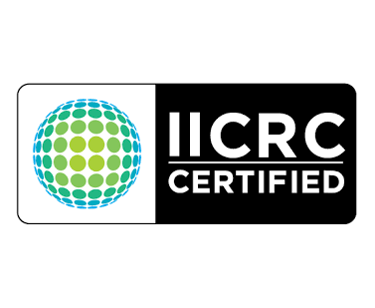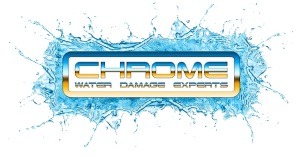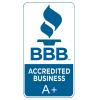We Work With All Insurances – No Hassle, No Delays, Just EXPERT WATER DAMAGE Restoration
Water Damage Repair Costs: What To Expect And How To Save


Imagine waking up in the middle of the night to a strange dripping sound. As you step out of bed, your feet land in an unexpected puddle—your home is under siege by water damage. Whether it’s a hidden leak slowly eating away at your walls or a sudden pipe burst flooding your basement, water damage is more than just an inconvenience; it’s a financial and structural nightmare that can spiral out of control if not handled swiftly.
Water damage can compromise your home’s foundation, lead to hazardous mold growth, and rack up thousands of dollars in repairs. The good news? By understanding the costs associated with water damage repair and learning how to minimize expenses, you can take control of the situation and protect your home from further damage.
In this guide, we’ll dive deep into the major water damage restoration cost factors, expected expenses for different types of water damage, money-saving strategies, insurance insights, and essential prevention tips to help you safeguard your home.
Water Damage Repair Costs: What Factors Influence the Price?
The cost of repairing water damage varies widely depending on several factors. Here’s what determines how much you might have to pay:
Type and Severity of Water Damage
A minor plumbing leak costs significantly less than repairing an entire flooded basement. The more widespread the damage, the higher the expense.
Structural damage or mold growth further increases repair costs.
Affected Areas
Flooring, walls, ceilings, and foundational structures all require different repair methods and materials, each with its own price tag.
Hardwood floors or carpets require specialized drying and restoration, increasing costs.
Type of Water Involved
Water damage falls into three categories:
Clean Water: From plumbing leaks or rainwater; least expensive to clean up.
Gray Water: From appliances or sinks; contains contaminants and requires specialized removal.
Black Water: From sewage or floodwaters; hazardous and requires extensive, costly remediation.
Labor and Material Costs
Costs vary by region due to differences in labor rates.
Materials such as drywall, insulation, flooring, and structural reinforcements can drive up costs.
Additional Factors
If mold removal, extensive dehumidification, or major structural repairs are needed, expect higher expenses.
Common Types of Water Damage and Their Repair Costs
Each type of water damage requires a different approach, impacting the cost. Here’s what you can expect to pay for common scenarios:
Minor Leaks and Plumbing Issues
Fixing small leaks typically costs $150 to $500.
If the leak causes drywall or flooring damage, the repair cost can rise to $1,000 or more.
Flooded Basements
Cleaning and drying a basement flood costs between $1,500 to $7,500, depending on the water depth and mold risk.
Waterproofing a basement to prevent future floods can range from $2,000 to $10,000.
Ceiling and Wall Damage
Repairing water-damaged drywall and repainting costs $500 to $2,500.
If the insulation behind the drywall is damaged, the cost can increase significantly.
Mold Growth and Removal
Mold remediation ranges from $500 to $5,000, depending on the severity and the affected area.
Delaying treatment can lead to structural decay and health risks.
How to Save Money on Water Damage Repairs (Without Cutting Corners)
The longer the water sits, the worse the damage gets. Address leaks or floods immediately to prevent escalating costs.
Consider DIY for Minor Issues
Small leaks or minor drywall repairs can often be handled yourself, saving on labor costs.
Check Your Homeowner’s Insurance
Many policies cover water damage from sudden leaks or storms.
Be proactive in filing claims—document damage with photos and contact your insurer promptly.
Look for Assistance Programs
Some local governments and disaster relief programs offer grants or financial aid for home repairs after severe water damage events.
Does Homeowners Insurance Cover Water Damage? What You Need to Know
What’s Typically Covered?
Sudden and accidental water damage from plumbing failures, burst pipes, or storms is usually covered.
Some policies include coverage for mold remediation if related to a covered water damage event.
What’s Not Covered?
Flood damage: Standard policies typically do not cover damage from natural flooding—you’ll need separate flood insurance.
Negligence-related damage: If damage results from poor maintenance (e.g., ignoring a leak), your claim may be denied.
How to File a Successful Insurance Claim
Document everything: Take photos and videos immediately.
Notify your insurer ASAP: The sooner you report the damage, the better.
Get professional assessments: Some insurers require damage evaluations from licensed professionals.
Preventing Water Damage: Proactive Steps to Protect Your Home
Regular Maintenance Checks
Inspect pipes, roofs, and drainage systems at least twice a year.
Look for signs of leaks, cracks, or weak spots in plumbing.
Use Smart Water Detection Technology
Install water leak detectors in high-risk areas such as kitchens, bathrooms, and basements.
Invest in a smart water shut-off system to prevent leaks from becoming floods.
Seal Windows, Roofs, and Foundations
Properly sealed surfaces prevent water intrusion and costly damage.
Check roof flashing and foundation sealing annually.
Winterize Your Plumbing
Insulate exposed pipes to prevent freezing and bursting during cold months.
Take Action Before It’s Too Late
Water damage can be devastating, but you don’t have to be caught off guard. By understanding repair costs, taking preventative measures, and exploring cost-saving strategies, you can protect your home and your wallet.
Don’t wait until water damage spirals out of control! If you’re facing water damage, act fast to minimize the damage and costs.
Call Chrome Water Damage Experts today for a free assessment and professional water damage repair. Our team is available 24/7 to help restore your home quickly and affordably.
Chrome Water Damage Experts
Expert water damage restoration for your home or business.
© 2025. All rights reserved.


services


About Us








